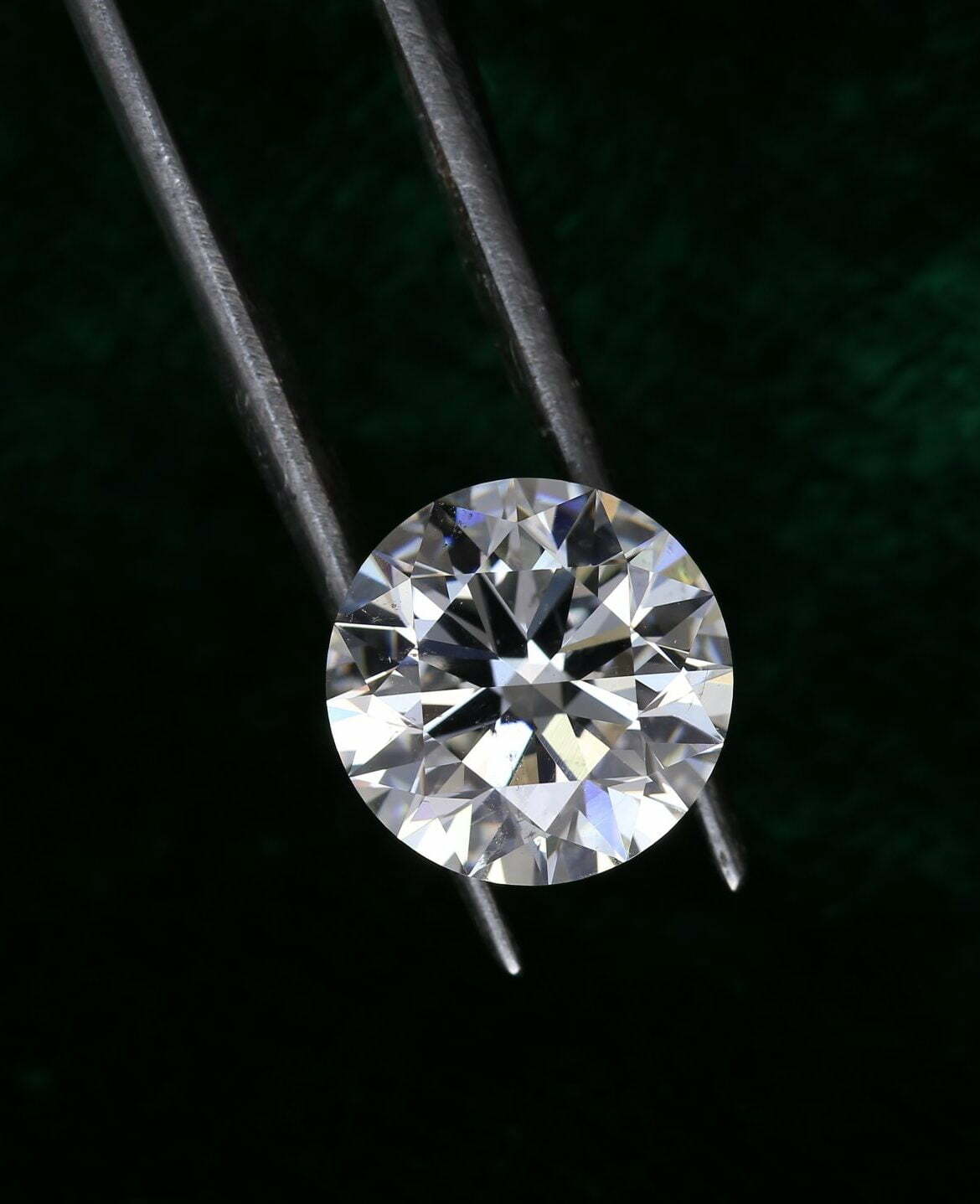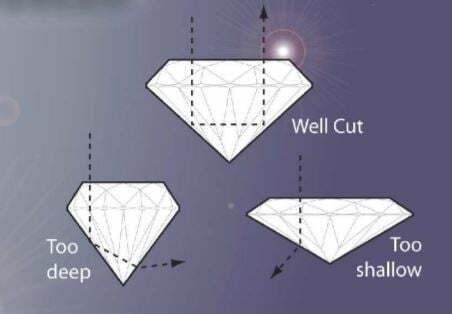The Definitive Guide To Diamond Selection

ARTICLE BY
Published
Looking for a diamond and getting lost in a sea of jargon? Let us give you some clarity.
It is easy to be overwhelmed when you start looking for a diamond. If you have begun some research, you will likely have heard of a phrase – the 4 C’s. This term was coined by the Gemological Institute of America (GIA) as a way of educating people about the four most important factors when looking at a diamond.
The Four C’s stand for Colour, Clarity, Cut and Carat.
Color
In most diamonds, the term actually refers to the absence of colour. Diamonds are often referred to as white, but they are in fact colourless. Generally speaking, the less colour in the stone, the more valuable it will be. Some of these differences are not easily distinguishable to the naked eye, but still directly impact the overall grade and therefore price of the stone. Diamonds are graded using a letter based system. D represents the highest colour grade possible and Z would represent a very yellow tinted diamond. Giulians recommend diamonds in the D – G colour range. D-F is considered colourless, while G, H, I are considered slightly tinted. The further into the alphabet you go, the more yellow or brown will be visible in the stone.

Clarity
This measures the amount, size and placement of internal ‘inclusions,’ and external ‘blemishes.’ GIA grades are as follows –
- (F) Flawless – this denotes a diamond with virtually no imperfections inside or out.
- (IF) Internally flawless – this is a diamond with no inclusion in the stone, but there is an imperfection on the outside of the diamond – usually called a natural, which is a little part of the diamond crystal skin that was not cut away. This would not be visible to the naked eye.
- (VVS) Very Very Slight – No inclusions in this grade are visible to the naked eye.
- (VS) Very Slight – If the inclusion is black, or in the centre of the diamonds table, this may be visible to the naked eye, but unlikely
- (SI) Slightly Included – A greater percentage of the diamond has inclusions. Depending on the type of inclusion and their location within the diamond, they would possibly be visible to the naked eye.
- (I) Included – which contain a significant number of imperfections, and would appear quite visible to the naked eye.

Cut
In this context, cut does not refer to a diamond’s shape, but to the proportion and arrangement of its facets and the quality of workmanship. The amount of brilliance, sparkle and fire in a diamond is determined by cut. If a diamond is well cut, it captures the light that hits the top (table) of the diamond, and reflects it off the bottom facets (pavilion) of the diamond to create an effect known as ‘total internal reflection’. This is most apparent in the traditional Round Brilliant cut diamond, as it is considered the ‘Ideal’ cut for the most reflection of light. If a diamond is cut too deep, the light will travel through the stone and escape out from the pavilion – as will a diamond that has been cut too shallow. On a GIA diamond grading report for a Round Brilliant Cut diamond, you will see 3 Cut based grades – Cut, Polish and Symmetry.
Grades are as follows –
(EX) Excellent
(VG) Very Good
(G) Good
(F) Fair
(P) Poor

We often recommend, especially for a round brilliant cut diamond, that you find a stone with a ‘triple excellent’ grading, which means the cut, polish and symmetry are all excellent. However, as a diamond like this can sometimes fetch a premium, it is also important not to rule out Very Good as a very acceptable grade as well. When it all boils down – choosing the right stone doesn’t always mean looking only at the specifications on paper. Some aspects of a diamond’s beauty comes down to how it speaks to you when you see it. This is why we believe it is important to have the opportunity to view a diamond in person, before purchasing.
It is important to note that fancy cut diamonds (anything other than round) are only given Polish and Symmetry grades. They do not receive a ‘Cut’ grading like Round Brilliant cuts.
Carat
This refers to a diamond’s weight. Diamonds are measured by carats and points. 100 points make up 1 carat. So a diamond that weighs 75 points is usually expressed as 0.75ct, a diamond that weighs 141 points would be expressed as 1.41ct. Some jewellers may also refer to set sizes as fractions – i.e – quarter carat (0.25ct), half carat (0.50ct) or three quarter carat (0.75), one and a half carats (1.50ct).
The higher the carat weight, the larger the visual proportions of the diamond will be, and for well cut round diamonds those proportions will be very consistent. A 1.00ct round brilliant cut diamond will have a diameter of around 6.5mm, while a 1.50 carat diamond will have a diameter of 7.4mm. Although the size of a diamond can affect the price of it, the other three C’s Colour, Clarity, and Cut will also be factored in. So it is possible that two diamonds of equal carat weight can have very different qualities and prices.
Certificate
There is also a 5th C to remember, and that is “Certificate”. At Giulians, our diamonds are sourced with a grading certificate, by a reputable diamond grading laboratory. International laboratories we recommend are GIA and HRD. Locally, we also use GSL and DCLA. It is important to buy a diamond that comes with a trusted gemmological grading certificate to ensure you are getting what you pay for, and that they have been accurately graded. Most certified diamonds will also come with a laser inscription of the corresponding diamond certificate number on the girdle of your diamond – meaning you always know it is your stone.
Shape
The most popular diamond shape is the modern Round Brilliant cut. Invented by Marcel Tolkowsky in 1919, it has a particular number of facets and cutting proportions which maximises the diamond’s brilliance and fire. If cut correctly, it captures the light that hits the top (table) of the diamond, and reflects it off the bottom facets (pavilion) of the diamond to create an effect known as ‘total internal reflection’. It is considered the ‘Ideal’ cut for a diamond.
But there are many more shapes available, known as Fancy cuts. Fancy cuts are less consistent with proportions, and are only given Polish and Symmetry grades. They do not receive a ‘Cut’ grading like Round Brilliant cuts.
Princess – this is a square cut diamond, with brilliant faceting similar to that of a round brilliant cut.
Pear – also known as tear-drop, this cut can have many proportions, with brilliant cut facetting in the pavilion.
Oval – Oval cut diamonds are usually a shallower cut, so can be a great option to get a diamond that looks visually bigger than it weighs.
Emerald – A rectangular or square cut with the corners removed, with very minimal faceting on the top and bottom known as ‘step-cut’. This minimalist look lends itself nicely to art deco designs, and generally requires a higher clarity of diamond.
Radiant – This is like an emerald cut profile from the top, with brilliant cut faceting on the pavilion, resulting in a diamond with more sparkle.
Cushion – Also called a modified brilliant cushion cut, this is similar in facetting to a round diamond, but has 4 soft edges like a rounded square.
Baguette – Baguette diamonds are rectangular in shape and the facets are step-cut like an emerald cut.
Tapered baguette – as the name implies, same facetting as the standard baguette but one end is narrower than the other.
We understand that choosing a diamond can be a very educational experience, and there are many important considerations to take into account. While you are deciding, it is important to remember that although all of the above factors will contribute to the appearance of a diamond, you are ultimately purchasing a natural diamond, and not a list of gradings written down on a certificate. Be guided by your own detailed observation of the diamond with the assistance of your trusted jeweller, and find the diamond that speaks to you!
